Posts Tagged: Ernesto Sandoval
If You Like Chocolate, Thank the Midges!
If you like chocolate, thank the midges. These tiny flies (about 1 to 3mm) pollinate the intricate flowers of the cacao tree, Theobroma cacao. From...
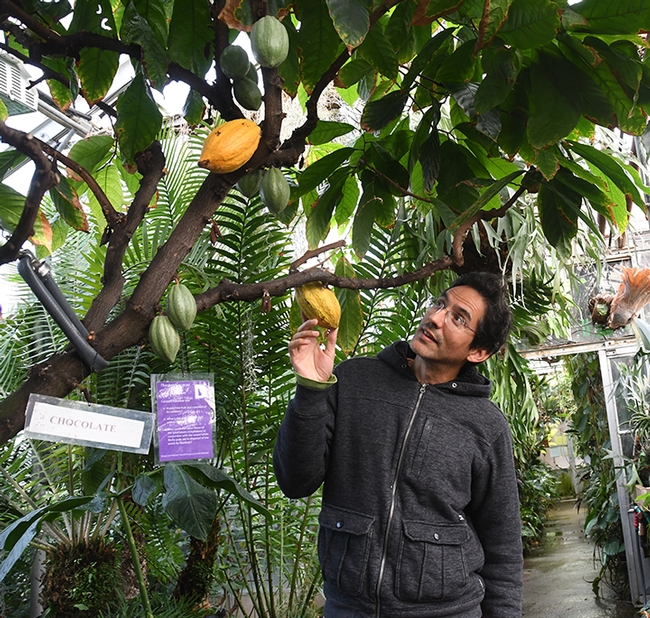
Ernesto Sandoval, collections manager for the UC Davis Botanical Conservatory, checks out the cacao tree, aka "chocolate tree." (Photo by Kathy Keatley Garvey)
This BOG in the Heart of UC Davis Is a Treasure
"A bog is a wetland that accumulates peat, a deposit of dead plant material—often mosses, and in a majority of cases, sphagnum...
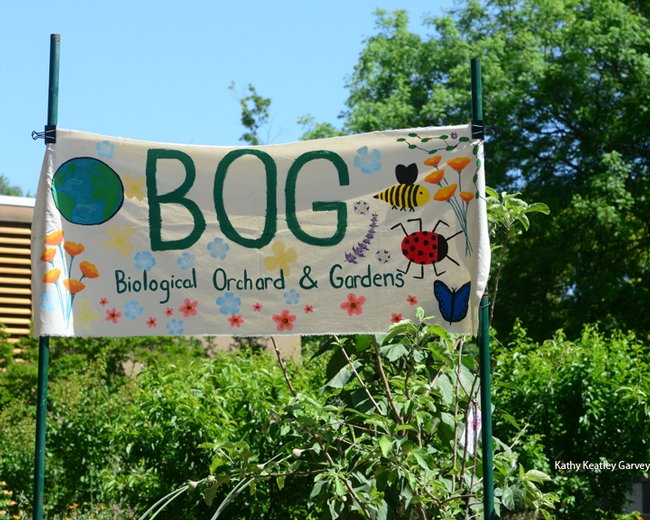
The Biological Orchard and Gardens (BOG) sign features floral and insect designs. It's located by the Mann Laboratory, UC Davis campus. (Photo by Kathy Keatley Garvey)
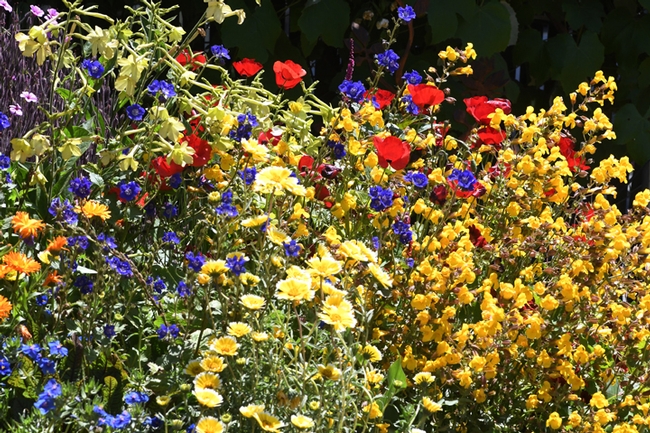
Colorful BOG garden in the early spring: among the flowers are tidy tips, desert bell, and European red flax. (Photo by Kathy Keatley Garvey)
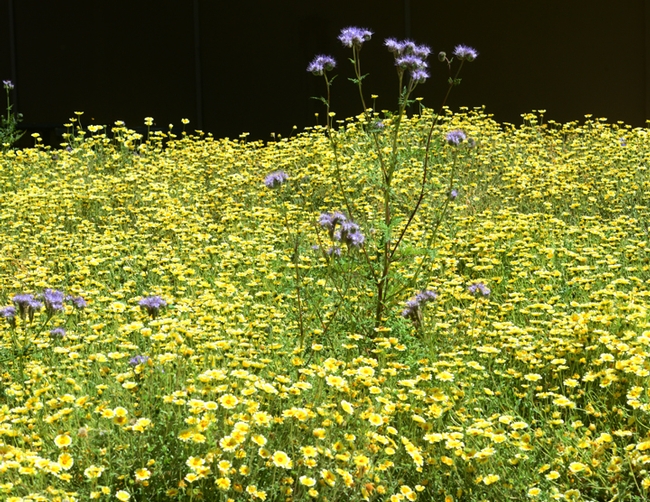
A mini-meadow of tidy tips, Layia platyglossa, with tall phacelia, Phacelia tanacetifolia. (Photo by Kathy Keatley Garvey)
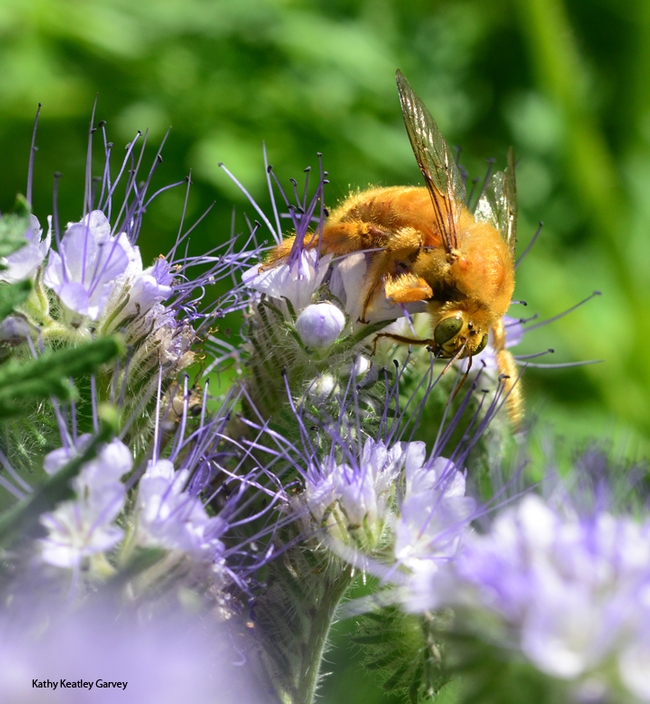
A male Valley carpenter bee, (Xylocopa varipuncta) forages on phacelia. (Photo by Kathy Keatley Garvey)
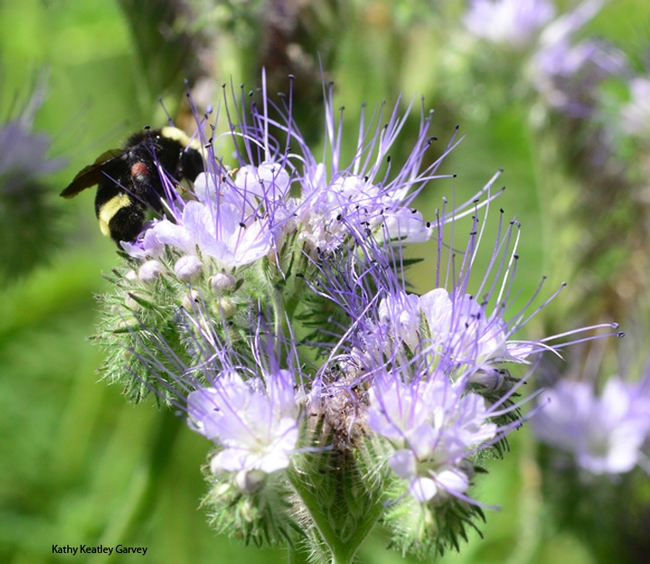
A yellow-faced bumble bee (Bombus vosnesenskii) sips nectar from phacelia. (Photo by Kathy Keatley Garvey)
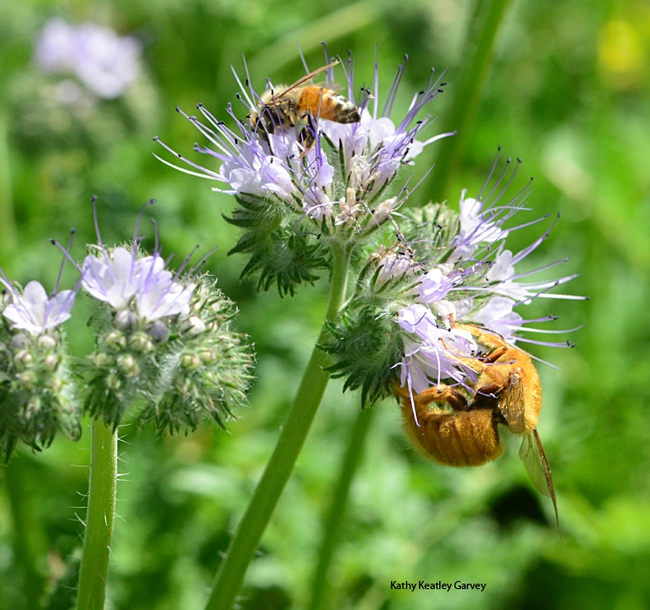
Size comparison! A honey bee is dwarfed by a male Valley carpenter bee, Xylocopa varipuncta. (Photo by Kathy Keatley Garvey)
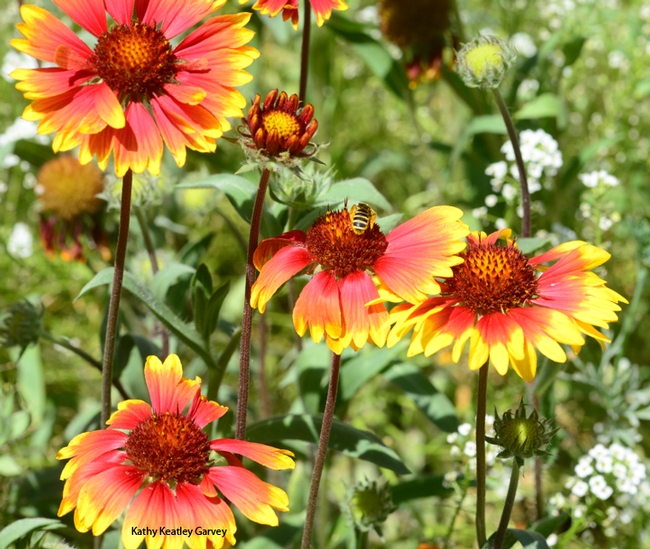
Many species of bees--as well as butterflies and other insects--are drawn to the blanketflower, Gaillardia. (Photo by Kathy Keatley Garvey)
Heaven Can Wait
They danced in it, rolled in it, and bathed in it. The honey bees just couldn't get enough of the rock purslane (Calandrinia grandiflora). ...

A honey bee can't wait for the Calandrinia grandiflora to open. (Photo by Kathy Keatley Garvey)

Two honey bees, packed with red pollen, share the same flower. (Photo by Kathy Keatley Garvey)

A honey bee exits the rock purslane flower and heads for another one. (Photo by Kathy Keatley Garvey)

